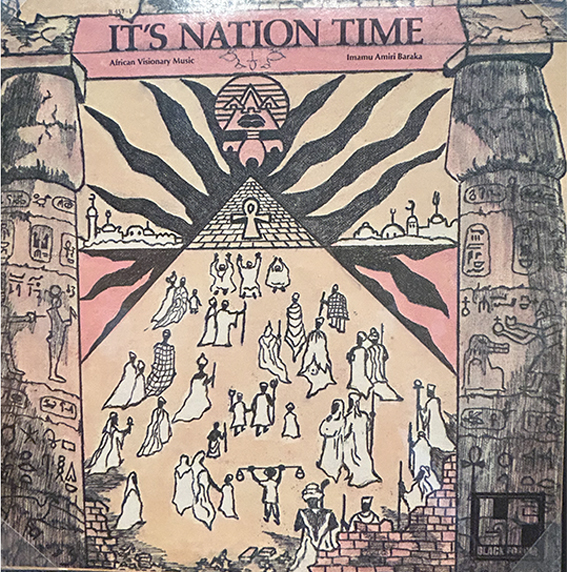Greg J – Beach City Perspective
The Civil Rights Movement of the 1950s and 1960s was a defining period in American history, marked by the struggle for racial equality, justice, and the dismantling of systemic segregation. Parallel to this political and social upheaval was a powerful cultural movement that emerged in the mid-1960s—the Black Arts Movement (BAM). Often considered the artistic arm of the Black Power movement, BAM sought to use literature, visual arts, theater, and music as tools for political empowerment and cultural affirmation.
Origins and Philosophy
The Black Arts Movement was sparked by the assassination of Malcolm X in 1965, which served as a catalyst for Black artists to take a more radical and nationalistic approach to art. The movement was formally initiated by poet and playwright Amiri Baraka (formerly LeRoi Jones), who established the Black Arts Repertory Theatre/School (BARTS) in Harlem. The philosophy of BAM was deeply rooted in the belief that Black art should be created by, for, and about Black people. It rejected the European aesthetic standards that had historically marginalized Black creative expression and instead celebrated African heritage, Black identity, and resistance against oppression.
Literature and Poetry
The literary arm of BAM was one of its most influential components. Writers like Sonia Sanchez, Nikki Giovanni, Haki Madhubuti, and Larry Neal produced poetry and prose that were deeply political, infused with themes of liberation, racial pride, and social justice. Their works often utilized African American vernacular, jazz rhythms, and free verse to break away from traditional Western literary conventions. Publications like The Black Scholar, Journal of Black Poetry, and Black World provided platforms for these voices, fostering an environment where Black literature could thrive without the constraints of mainstream publishing.
Visual Arts
Visual artists of the Black Arts Movement sought to create images that reflected Black experiences, struggles, and aspirations. Painters like Jeff Donaldson, Faith Ringgold, and Barkley L. Hendricks used bold colors, African motifs, and revolutionary themes to challenge racist portrayals of Black people in mainstream media. The AfriCOBRA (African Commune of Bad Relevant Artists) collective was particularly influential in promoting a distinctive Black aesthetic that embraced African traditions while addressing contemporary social issues. Other notable artists include Elizabeth Catlett, whose powerful sculptures and prints depicted the strength and resilience of Black people, and Charles White, whose evocative drawings and paintings captured the dignity and determination of African Americans.
Theater and Performance
Theater played a crucial role in the Black Arts Movement by bringing revolutionary ideas to the stage. Playwrights such as Amiri Baraka, Ed Bullins, and Adrienne Kennedy wrote dramas that tackled issues of racial injustice, Black empowerment, and cultural identity. The Negro Ensemble Company, founded in 1967, became a prominent institution that nurtured Black playwrights, actors, and directors. Their productions sought to reflect the real-life experiences of Black communities while also offering a vision of resistance and self-determination. Other influential figures included Ossie Davis and Ruby Dee, who used their performances to highlight civil rights issues and advocate for social change.
Music and Spoken Word

Music was another integral component of BAM, with jazz, soul, and spoken word performances serving as mediums for protest and cultural affirmation. Artists like Gil Scott-Heron and The Last Poets fused poetry with rhythmic beats to create politically charged spoken word pieces that laid the foundation for future hip-hop artists. Meanwhile, musicians like Nina Simone and Max Roach used their craft to produce songs that became anthems of the movement, addressing themes of racial pride and social injustice. John Coltrane’s jazz compositions, such as Alabama, reflected the sorrow and resilience of Black Americans, while Archie Shepp incorporated revolutionary themes into his avant-garde jazz performances.
Legacy and Impact
The Black Arts Movement declined in the mid-1970s due to internal conflicts, government suppression, and the broader shift in political activism. However, its influence on Black cultural expression remains profound. The movement paved the way for contemporary Black literature, theater, and hip-hop, inspiring later generations of artists to use their work as a means of activism and self-definition. The emphasis on African heritage, racial consciousness, and artistic autonomy continues to resonate in today’s cultural and political landscape.
The Black Arts Movement was more than an artistic phenomenon; it was a radical declaration of Black self-determination and a demand for cultural sovereignty. By intertwining art with activism, BAM helped to shape a new cultural identity that continues to inspire and empower Black artists and communities worldwide.